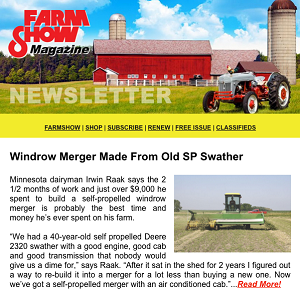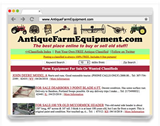2013 - Volume #37, Issue #2, Page #25
[ Sample Stories From This Issue | List of All Stories In This Issue | Print this story
| Read this issue]
Old Grain Drills Make Great Lamb Feeders
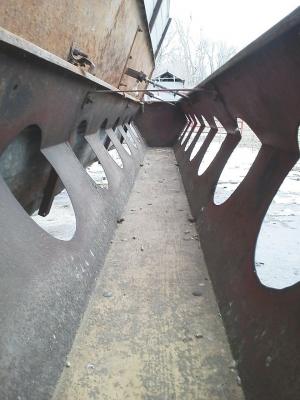 |
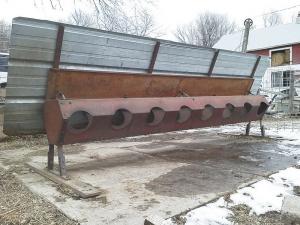 |
“I’ve tried open bunks and covered bunks, and it’s always a problem with lambs getting their front feet into the feed,” says Fett. “Once the feed is manure tainted, they often won’t eat it. And if they do, they can pick up coccidiosis. Creep rations are too expensive to waste.”
Fett looks for grain drills that are at least 10 to 11 ft. long. That lets him position at least 8 feeding stations on one side and 7 on the other. He strips away everything but the bare box with its cover and the hardware that attaches it to the frame. The rest goes for salvage at or above the price that the entire grain drill would bring.
“Scrap dealers often don’t want the thin metal of the seed box anyway,” notes Fett.
His next step is to cut a 1-in. board to length with a width to match the bottom of the box. He bevels the long edges to match the slope of the box and drops it in place.
Fett uses the original box supports to fashion legs for the feeder. He cuts 4-ft. lengths of cutting edge from old snow blades and welds short strips of steel to match the box support positioning.
“The cutting edge has a curve to it and I place it face down,” says Fett. “That keeps it from bothering the lambs’ feet.”
Fett drills multiple holes in the box support ends. This lets him adjust the height of the feeder by moving bolts that attach the base feet to the box supports.
“I cut 8-in. round holes with a plasma torch 3 1/2 in. above the board with an 8 in. space between them,” says Fett. “A regular cutting torch gets the thin steel too hot, and it will warp. It’s also easier than trying to cut round holes with a metal saw.”
To better cover the feed, Fett attaches four pieces of steel tubing to the seed box covers. These support 38-in. wide sheets of construction steel with self-tapping roofing screws.
“I use light tubing as it only needs to support the sheeting,” says Fett. “I put a rod in the center for a handle and round off the sheeting corners for safety.”
Staggered holes on opposing sides ensure lambs don’t butt heads. Hole placement gives each lamb about 16 in. of space, sufficient for Fett’s largest lambs.
“We keep our lambs until they are 70 to 90 lbs. before selling them to feedlots for finishing,” says Fett. “The 8-in. round hole lets a single lamb’s head move in and out easily. The space is enough for them to stand side by side.”
The 3 1/2-in. depth combined with the spacing ensures each lamb has access to sufficient feed. Larger sheep can’t get their heads inside. Eating with their heads inside the feeder reduces lambs being spooked away from the feeder. It also reduces a tendency to move around and pick over the feed.
“They can’t sort through the feed, so they eat what’s in front of them,” says Fett.
Contact: FARM SHOW Followup, Edward Fett, 46656 275th St., Lennox, S. Dak. 57039 (ph 605 647-2399 evenings).
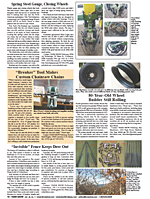
Click here to download page story appeared in.
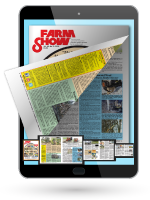
Click here to read entire issue
To read the rest of this story, download this issue below or click here to register with your account number.


